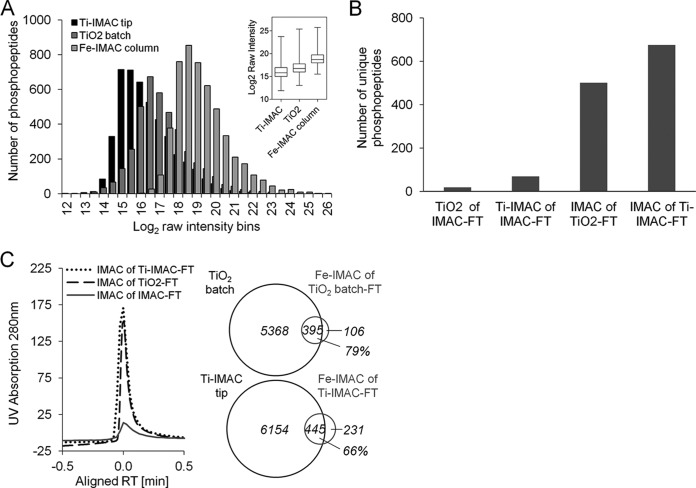Fig. 3.
Comparison of Fe3+-IMAC, Ti-IMAC tip, and TiO2 batch enrichments. A, MS signal intensity distribution of unique phosphopeptides for each method showing the superiority of Fe-IMAC for phosphopeptide recovery from complex digests. The box plot (inset) summarizes the same data for a triplicate measurement. B, summary of the number of unique phosphopeptide identifications (in triplicate) from experiments aiming at recovering phosphopeptides from the unbound fractions of one enrichment method using an alternative enrichment method. The data show that Fe-IMAC recovered a noticeable number of phosphopeptides from the unbound fraction of TiO2 batch and Ti-IMAC tip enrichments. TiO2 batch and Ti-IMAC tip purifications from the unbound Fe-IMAC fraction did so to a much lesser extent. C, UV chromatogram of Fe-IMAC enrichments from the unbound fractions of TiO2 batch and Ti-IMAC tip experiments. The Venn diagrams (triplicate experiments) show that the phosphopeptides recovered by Fe-IMAC largely overlapped with those identified in the original TiO2 batch and Ti-IMAC tip enrichments, indicating insufficient capacity of the amount of TiO2 and Ti-IMAC used.

